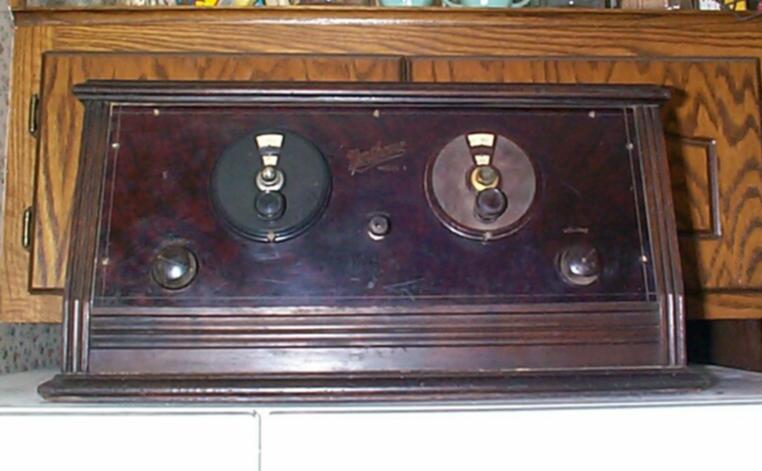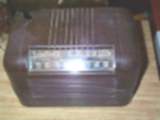
JUST FOLLOW THE THUMBNAIL LINK BELOW:
Something to always keep in mind with any restoration: Use a process that can be reversed easily. In other words, if you make a mistake, or if someone needs to refinish a cabinet, do your finishing in such a manner to undo it at a later time.
Sometimes the condition of the veneer makes this difficult, but if an old veneer can be re-glued, and new pieces of veneer patched into the damaged areas, the finished product will look that much better, and retain it's value.
There is a tendency for people to use "Poly Eurethane" finishes, or just an oil finish- The "Poly's" are not easily stripped, plus they have a surface sheen which lacks the depth and richness of the old original finishes. Oils do not develop a thickness of surface film, and while it may make for an "aestetically pleasing" appearance by today's standards, it has the completely wrong look as they (oil and "Poly-Eurethanes" for that matter) were not a common finish at all on radios prior to about 1970.
Most of the finishes used in the teens, twenties, and thirties were either "Nitro-Cellulose Lacquer", "Alkyd" based "Spar Varnish", or Shellac. Each has it's own character, and surface film thickness. The order I listed them is the order of thickness of each from thin to thick (in general) of the film build.
The number of steps involved has an influence on appearance also. Stains applied prior to the finish coat will have a different appearance than a tinted varnish. Spot repairs will reveal this quickly, which is why there are very few people discussing it for furniture in general, let alone radios
Most of these radios were finished with a single application of a sprayed finish; most often a tinted coating; some of the more expensive radios had a second coating. All three finishes listed above can be sprayed. As tempting as an "all in one step refinisher" may sound- avoid it, it will destroy the value to a collector.
With some woods such as Mahagony (all varieties), Walnut (All varieties), and Rosewood, the pores of the wood were usually filled with a wheat starch. Corn starch shrinks, and is not as desired for that reason. In cases of tinted finishes, which was the vast majority of finishes at that time, the starch would absorb color from the stain at a different rate than the wood itself, and would allow the grain to "show".
If you want a "glassy smooth" finish that has the beauty of the original consoles of the era, "French Polish" the first coat, and lightly tack the surface, leaving pores and voids filled, and then apply the second coating of oneof the three finishes mentioned earlier, and "French Polish" again. Finnish with a hard paste wax

Random Site

